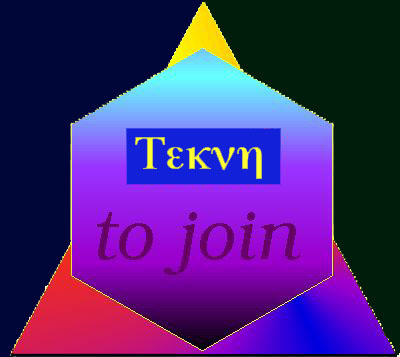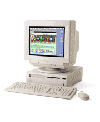![]() Many people think of technology as only the study of human tool use, it is more; meaning the Aristotelian relations, the personal experience, and the confusion people harbor about why, when and how tools are related.
Many people think of technology as only the study of human tool use, it is more; meaning the Aristotelian relations, the personal experience, and the confusion people harbor about why, when and how tools are related.
Three diagrams of why technology and tool use is complicated.
“Human tool-makers always make tools that will help us get what we want, and what we want hasn't changed for thousands of years because as far as we can tell the human template hasn't changed either. We still want the purse that will always be filled with gold, and the Fountain of Youth. We want the table that will cover itself with delicious food whenever we say the word, and that will be cleaned up afterwards by invisible servants. We want the Seven-League Boots so we can travel very quickly, and the Hat of Darkness so we can snoop on other people without being seen. We want the weapon that will never miss, and the castle that will keep us safe. We want excitement and adventure; we want routine and security. We want to have a large number of sexually attractive partners, . . . "
Margaret Atwood, In Other Worlds: SF and the Human Imagination
The complications of a "tool complex."
tetrahedron | simple approach | complications | confusion | unseen capacities of tools | what is technology?
Apex |

|
Base of the "aspects" triangle |
Two Greek words --tekne & logos-- combined meaning "to join" and "comprehension."
But as this diagram suggests, the use of tools is only the extremity or apex of this far more complex triangle. If you take this tetrahedron as a representation of how technology intersects with our lives and add another dimension of depth, a more complete image of technology emerges as a pyramid.
Below is a graphic, Pacey's graphical rendering of ways to properly define technology. He is depicting the extension of the triangle's dimensions into a pyramid; it serves as an abstract representation of technology as an intersecting set of personal and social experiences, or planes of interaction among people, their perceptions, feelings, beliefs, institutions and things.
"“The intentions of a tool are what it does. A hammer intends to strike, a vise intends to hold fast, a lever intends to lift. They are what it is made for. But sometimes a tool may have other uses that you don't know. Sometimes in doing what you intend, you also do what the knife intends, without knowing.”
— Philip Pullman, His Dark Materials Trilogy: The Golden Compass / The Subtle Knife / The Amber Spyglass
Figure 1: a pyramid is from Arnold Pacey, The Meaning of Technology, p. 10-17.
Abraham Maslow, 1908-1970.
Tools that are used as a means to other ends or even an end in themselves possess more than one dimension.
That means that the tools we depend on do not merely affect us in how these devices shape our experience. Tools can reorganize what we see and how we do what we do, and they can even alter who we think we are or how well we think of ourselves.
Arnold Pacey, Meaning.
tetrahedron | simple approach | complications | confusion | unseen capacities of tools | what is technology?
In order to simplify what Pacey calls a diagrammatic definition of 'technology' and technology practice', I suggest the concept of a triangle. the apex of that triangle is what Arnold Pacey calls "restricted meaning of technology" and it is distinguished from the base of the figure, by which Pacey means the "general meaning of technology."
These are three facets of technology that need to be defined.
Thus Pacey's restricted meaning refers to what most people consider adequate to define technology, but this widespread concept rests on a base of a more detailed meaning of the word that is not always widely appreciated. Because of this restricted versus generalized meaning of technology the situation leads to some uncertainty on what precisely is meant by technology.
A selection from Pacey's earlier book:
He seeks to define technology by looking at what other more recognized authors have said about the definition. "Some formal definitions of technology hover uncertainly between the very general and the more restricted usage. Thus J. K. Galbraith defines technology as 'the systematic application of scientific or other organized knowledge to practical tasks.' This sounds a fairly definition, but on reading further one finds that Galbraith thinks of technology as an activity involving complex organizations and value systems. In view of this, other authors have extended Galbraith's wording."
"For them a definition which makes and explicit the role of people and organizations as well as hardware is one that describes technology as 'the application of science and other organized knowledge to practical task by ... ordered systems that involve people and machines."
"Thus our definition needs to be enlarged further to include 'live-ware' as well as hardware; technology-practice is thus the application of scientific and other knowledge to practical tasks by ordered systems that involve people and organizations, living things and machines."
"Given the confusion which surrounds the usage of the word 'technology', it is not surprising that there is also confusion about the two adjectives 'technical' and technological''.
"Technical ...represents an attempt to solve a problem by means of technique alone, and ignores possible changes in practice (techniques) that might prevent the dumping of pollutants in the river in the first place.
(Pacey, op. cit. p. 7.)
tetrahedron | simple approach | complications | confusion | unseen capacities of tools | what is technology?
"This is a definition which to some extent includes science within technology. That is not, of course, the same as saying that science is merely one facet of technology with no purpose of its own....And a great deal of science is like this, with goals that are definitely outside technology-practice, but but with a practical function within it."
See Pursell's definition for historical perspective.
(Arnold Pacey, Culture of Technology, pp. 5-6) is the source of the above discussion.
tetrahedron | simple approach | complications | confusion | unseen capacities of tools | what is technology?
“These were the things that built the world. Not to know or care about them was a betrayal of fundamental principles, a betrayal of gender, of species. What could be more useless than a man who couldn't fix a dripping faucet—fundamentally useless, dead to history, to the messages in his genes? I wasn't sure I disagreed.”
Don DeLillo, White Noise
A simplified version of Pacey's Three Aspects of technology that can be thought of a three or four dimensions. These three different planes on which technology operates intersect with our personal experiences. Thus after seeing three aspects of tools as Aristotle did, Pacey in later books argues that our private encounters with technical situations, mechanical equipment and technicalities of how machinery operates, also play a significant part in how we define technology.
The dimensions, described above are one of several concepts that make the study of technology complicated.
Adding to the complexity of understanding tools and technology is the use of those devices from their origins or invention to their development, dispersion, and current status are these related concepts:
Terms | Glossary | Word webs | Basic vocabulary | Advanced Vocabulary | Antonyms | Obscure words
 |
||
|---|---|---|
| Tools of Toil: what to read. | ||
| Tools are historical building blocks of technology. | ||
Pursell | Pacey–World | Postman | Head | Tenner |Pacey–meaning| Eberhart | Snow | Kaku | Boulding | Delillo | Kranzberg
| Postman–Tech | Postman–Television |
